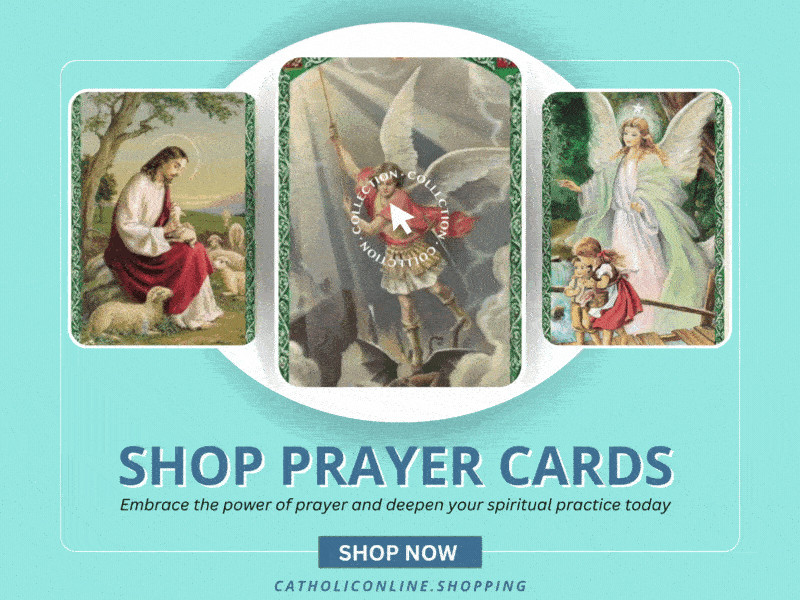We ask you, urgently: don't scroll past this
Dear readers, Catholic Online was de-platformed by Shopify for our pro-life beliefs. They shut down our Catholic Online, Catholic Online School, Prayer Candles, and Catholic Online Learning Resources essential faith tools serving over 1.4 million students and millions of families worldwide. Our founders, now in their 70's, just gave their entire life savings to protect this mission. But fewer than 2% of readers donate. If everyone gave just $5, the cost of a coffee, we could rebuild stronger and keep Catholic education free for all. Stand with us in faith. Thank you.Help Now >
Morse
FREE Catholic Classes
( Latin morsus ).
Also called the MONILLE, FIRMULA, FIRMULE, PECTOIRALE, originally the rectangular ornamented piece of material attached to the two front edges of the cope near the breast to prevent the vestment from slipping from the shoulders. Morses were provided with hook and eye, and were often richly ornamented with embroidery or precious stones. The name was also applied to metal clasps used instead of such pieces of woven fabric. As early as the eleventh century such metal clasps are found represented in miniatures and mentioned in inventories. These clasps, however, gradually lost their practical use and became were ornaments, which were sometimes sewn firmly to the flaps that served to fasten the cope, sometimes only attached to the flaps by hooks, so that, after the vestment had been worn, the clasps could be removed and cared for separately. This latter was especially the case when, as frequently happened at least in the later Middle Ages, the clasp was very heavy or very valuable. As early as the thirteen century inventories clasps which formed distinct ornaments in themselves. Many churches had a large number of such morses. They were generally made of silver covered with gold, and were ornamented with pearls, precious stones, enamel, niello-work, architectural designs, small, figures of saints, ornamental work in flowers and vines and similar designs. Such clasps were frequently the finest products of the goldsmith's art; they were generally either round, square, quatrefoil, or like a rosette in form; yet there were also more elaborate and at times peculiar shapes. Abundant proof of the desire for costly clasps for the cope is shown by the old inventories and by the numerous medieval morses preserved (especially in Germany ) in churches and museums. According to present Roman usage the morse is reserved to cardinals and bishops ( "Caer. episc." , I, c. vii, n. 1; S. R. C:., 15 September, 1753).
Join the Movement
When you sign up below, you don't just join an email list - you're joining an entire movement for Free world class Catholic education.

-

- Stations of the Cross
- Easter / Lent
- 5 Lenten Prayers
- Ash Wednesday
- Living Lent
- 7 Morning Prayers
- Mysteries of the Rosary
- Litany of the Bl. Virgin Mary
- Popular Saints
- Popular Prayers
- Female Saints
- Saint Feast Days by Month
- Pray the Rosary
Massive Egg Recall Highlights the Dangers of Centralized Food Systems: Why We Need Local Solutions
Pope Francis Advances Five Causes for Sainthood
Finding Strength in Faith During Job Market Uncertainty
Daily Catholic
 Daily Readings for Tuesday, April 01, 2025
Daily Readings for Tuesday, April 01, 2025 St. Hugh of Grenoble: Saint of the Day for Tuesday, April 01, 2025
St. Hugh of Grenoble: Saint of the Day for Tuesday, April 01, 2025 Prayer for God's Help in Daily Actions: Prayer of the Day for Friday, March 14, 2025
Prayer for God's Help in Daily Actions: Prayer of the Day for Friday, March 14, 2025 Daily Readings for Monday, March 31, 2025
Daily Readings for Monday, March 31, 2025 St. Benjamin: Saint of the Day for Monday, March 31, 2025
St. Benjamin: Saint of the Day for Monday, March 31, 2025- To Perceive Animals as God's Gifts: Prayer of the Day for Thursday, March 13, 2025
![]()
Copyright 2025 Catholic Online. All materials contained on this site, whether written, audible or visual are the exclusive property of Catholic Online and are protected under U.S. and International copyright laws, © Copyright 2025 Catholic Online. Any unauthorized use, without prior written consent of Catholic Online is strictly forbidden and prohibited.
Catholic Online is a Project of Your Catholic Voice Foundation, a Not-for-Profit Corporation. Your Catholic Voice Foundation has been granted a recognition of tax exemption under Section 501(c)(3) of the Internal Revenue Code. Federal Tax Identification Number: 81-0596847. Your gift is tax-deductible as allowed by law.


 Daily Readings for Tuesday, April 01, 2025
Daily Readings for Tuesday, April 01, 2025 St. Hugh of Grenoble: Saint of the Day for Tuesday, April 01, 2025
St. Hugh of Grenoble: Saint of the Day for Tuesday, April 01, 2025 Prayer for God's Help in Daily Actions: Prayer of the Day for Friday, March 14, 2025
Prayer for God's Help in Daily Actions: Prayer of the Day for Friday, March 14, 2025 St. Benjamin: Saint of the Day for Monday, March 31, 2025
St. Benjamin: Saint of the Day for Monday, March 31, 2025

